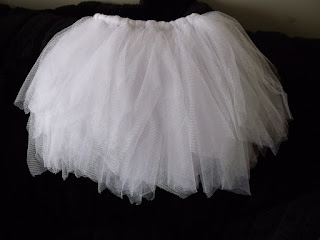I have a new favourite drinking milk - homemade coconut milk! It's so very delicious and inexpensive and has tons of nutritional benefits. My first experiment was done by filling a medium saucepan about 3/4 full of water (sorry for the "of water" omission in today's first post, thanks S!), adding three handfuls (handsful?) of shredded coconut and heating them (I boiled the first time but was concerned about loss of nutrients) together for about 5 minutes. Once the mixture was cooled enough, I poured it into a blender and ran the blender for about a minute then strained the mixture through a fine sieve (and pressing the fleshy bits) before pouring into a container to be refrigerated. I also drank about half a cup of it before putting it into the fridge. It was wonderful and creamy and absolutely delicious. The next morning I was delighted to find the cold version was not only equally delicious but very refreshing. I immediately made another batch, this time adding it to the blender while it was still as warm as I thought my blender could tolerate, then added cinnamon - definitely a new favourite in the warm beverage category! My next experiment was to just soak shredded coconut in an equal amount of hot water for 5 minutes then pour it through the sieve and press the flesh. This provided a very nice milk as well, though I still preferred the creaminess result of boiling/blending over this one.
One of the benefits I appreciate most from our homemade nut milks (almond, walnut, and now coconut!) in addition to that wonderfully therapeutic feel of working with food, is always being able to make some as long as I have nuts in the cupboard. I've never done a price comparison of homemade nut milk vs dairy milk for a family of 4, but the homemade nut milk is definitely less costly than commercially-prepared nut milks and has that additional benefit of the lovely feeling that comes from peparing it myself.
The nut milks we make generally follow the same recipe - soak the nuts overnight, rinse well, put nuts into blender and add more or less twice as much water to nuts, blend for a few minutes, strain, store in refrigerator. Some folks would add vanilla and/or sweetener. The remaining nut "mash" or pulp can be re-used for another batch of (thinner) milk, used with other foods or just eaten on its own - lovely with honey.
There are benefits to soaking the (plain, unsalted) nuts beforehand, though you can also just use them without soaking. (***for those interested in nutritional information, read up on the importance of soaking nuts and the connection to phytic acid)
The water/nut ratio depends on your taste as well as how you'll be using the nut milk. I prefer a thicker milk for gravies/sauces/puddings, and somewhat thinner for drinking.
Well, I must be off - there's a bottle of coconut milk that's been cooling since last night....
One of the benefits I appreciate most from our homemade nut milks (almond, walnut, and now coconut!) in addition to that wonderfully therapeutic feel of working with food, is always being able to make some as long as I have nuts in the cupboard. I've never done a price comparison of homemade nut milk vs dairy milk for a family of 4, but the homemade nut milk is definitely less costly than commercially-prepared nut milks and has that additional benefit of the lovely feeling that comes from peparing it myself.
The nut milks we make generally follow the same recipe - soak the nuts overnight, rinse well, put nuts into blender and add more or less twice as much water to nuts, blend for a few minutes, strain, store in refrigerator. Some folks would add vanilla and/or sweetener. The remaining nut "mash" or pulp can be re-used for another batch of (thinner) milk, used with other foods or just eaten on its own - lovely with honey.
There are benefits to soaking the (plain, unsalted) nuts beforehand, though you can also just use them without soaking. (***for those interested in nutritional information, read up on the importance of soaking nuts and the connection to phytic acid)
The water/nut ratio depends on your taste as well as how you'll be using the nut milk. I prefer a thicker milk for gravies/sauces/puddings, and somewhat thinner for drinking.
Well, I must be off - there's a bottle of coconut milk that's been cooling since last night....

